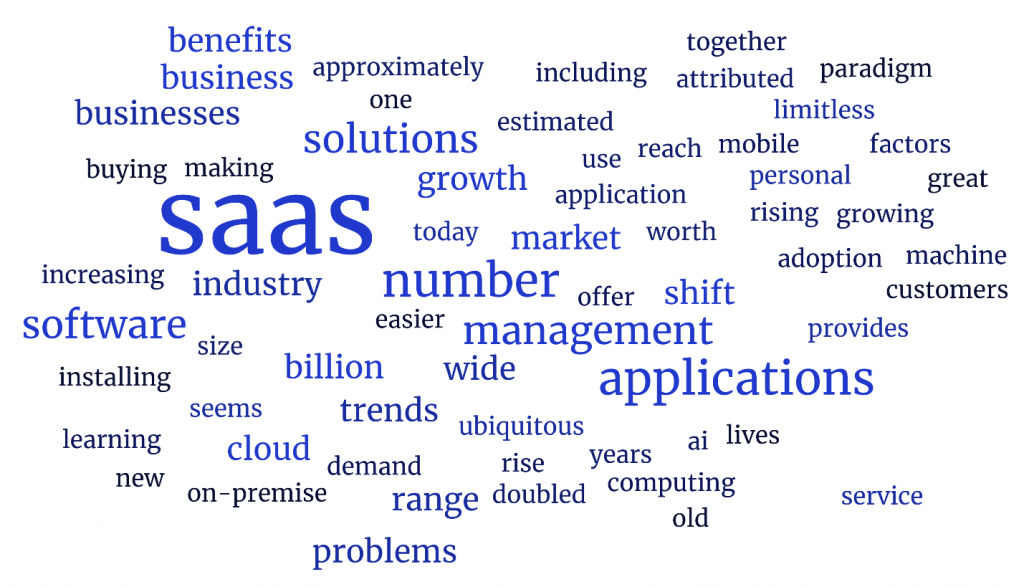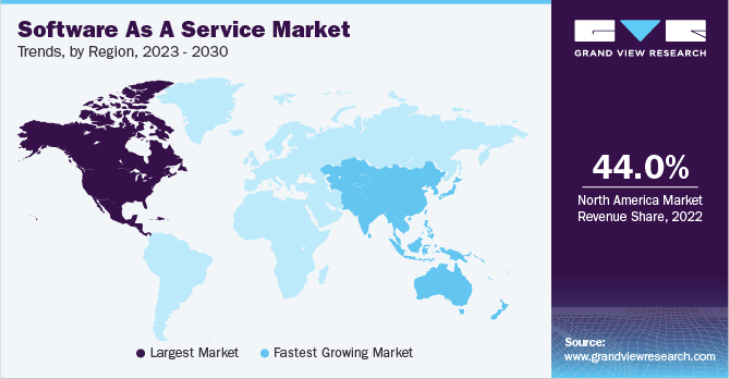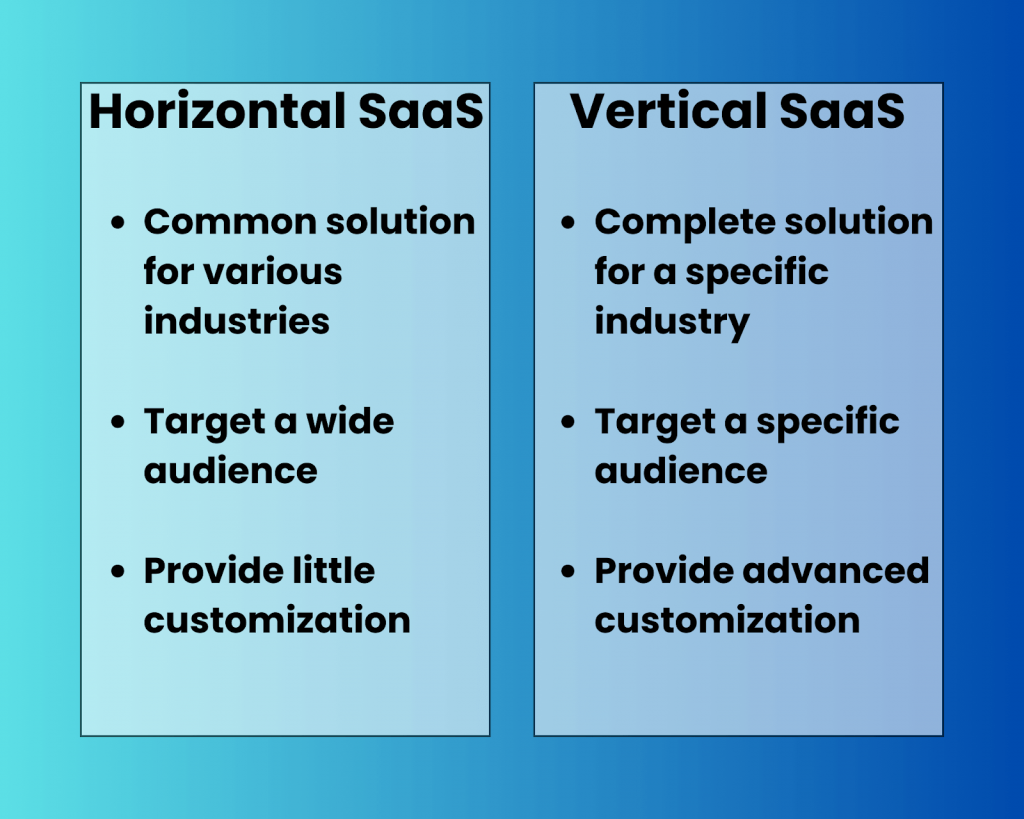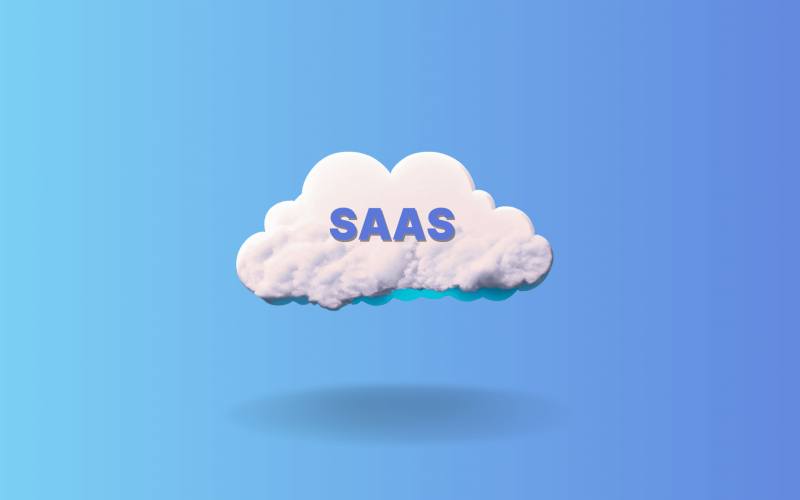Software as a service (SaaS) seems to be ubiquitous today as it provides a limitless number of solutions for business and personal use. Cloud application market size has more than doubled in 5 years (2015-2020). In 2023 the SaaS market is estimated to reach approximately $197 billion worth rising to $232 billion by 2024, which can be attributed to a number of factors, including the increasing adoption of cloud computing, the growing demand for mobile applications, together with the rise of AI and machine learning.
SaaS solutions offer a great number of benefits, making their customers’ lives easier. A shift from an old paradigm of buying and installing on-premise software to a new one of moving to SaaS with constant updates was inevitable and granted SaaS users more freedom. As a result of this shift, SaaS is being used by businesses of all sizes across a wide range of industries.
In addition to its rapid growth, SaaS is also characterized by its enormous number of applications able to solve a wide range of business problems, from customer relationship management to supply chain management, providing all the necessary insights. Some of the most popular SaaS applications include CRM, project management, accounting solutions, and marketing software, with time becoming more sophisticated and powerful, which will help deal with even more problems and guarantee a bright future for the SaaS industry. As a result, the SaaS industry continues to grow, with B2B SaaS marketing playing a critical role in reaching the right audiences and driving adoption in an increasingly competitive market—guaranteeing a bright future for the sector.
In this article we’ll explore the types of SaaS companies, the benefits SaaS provides to businesses and current global trends shaping the SaaS industry.
Contents:
2. State of SaaS: Regional data
3. SaaS benefits for businesses
5. Latest trends for SaaS companies

SaaS in a nutshell
The term SaaS, or Software as a service, is a cloud-based software delivery model that provides businesses with access to applications over the internet on a subscription basis. In this model, an independent software vendor (ISV) may contract a third-party cloud provider to host the application, while in case of larger companies, the software vendor might also be the cloud provider, like Microsoft, Google or Adobe. Basically, a SaaS company is any company that maintains its software on a cloud and delivers it to the clients on the basis of a monthly or annual ( two most common options) subscription plan.
The SaaS model relies on recurring revenue, which makes it easier to predict revenue in the short term. In the long term, though, it might be problematic to ensure that customers renew their contracts, which is why SaaS companies need profitability analysis and planning, the winning strategy for SaaS being PLG or product-led-growth that relies on the quality of the product for user acquisition, conversion, retention and ultimately expansion.
According to Yahoo Finance, the biggest SaaS companies by market capitalization are Microsoft, Alphabet, Oracle, Cisco, and Salesforce. There are many known to the general public, like Slack, Zoom, Netflix, Amazon web services, Google, Miro and the list goes on. According to Forbes’s Cloud 100 , a list of the world’s best private cloud computing companies, the top 5 are taken by Open AI, Databricks, Stipe, Canva and ServiceTitan. It’s no surprise that half of the companies from the list are already incorporating generative AI into their products. Many of the newcomers in the Cloud 100 are AI startups enjoying their prime time this year, clouded by tech sector changes that led to a considerable number of layoffs in some companies.
State of SaaS: Regional data
According to the Grand View research of the SaaS market, the global SaaS market is expected to grow to $819.23 billion by 2030, with the North American SaaS market, which represented 44% of the global market share in 2022. This dominance is explained by the presence of well-established market players as one of the driving factors for the market growth together with the developed IT and cloud infrastructures, and the availability of many secured internet servers.
On the other hand, the Asia Pacific region is expected to show the fastest CAGR over the period of 2023-2030 with China and India being the biggest contributors due to the growing demand for outsourcing. Small and midsize enterprises outsource cloud-based software platforms, which decreases the cost of on-premises software deployment. At the same time, the region is experiencing a significant growth of the IT industry fostered by the growing number of secured internet servers in China, Japan, and India. Moreover, the maturing Chinese economy demands more sophisticated enterprise software solutions for the growing businesses, which, in turn, drives the growth of SaaS solutions in areas such as ERP, CRM, and HR management.
The picture below shows the regions that are slightly left behind, including Europe, Africa and Latin America.

SaaS benefits for businesses
Boosted by the switch to remote work during pandemic times, SaaS companies are experiencing a huge growth stage. The popularity of SaaS products is easy to grasp when looking at the benefits they provide in comparison to the traditional software model. The most obvious ones include lower upfront costs, easier scalability, improved security and compliance, reduced IT complexity and increased flexibility.
Lower upfront costs
SaaS applications are typically priced on a subscription basis, which means businesses only pay for the software they use, saving them a significant amount of money, especially compared to the upfront costs of traditional software development licenses.
Easier scalability
SaaS applications are initially designed to be scalable, so businesses can easily add or remove users as needed. Such scalability helps businesses save money on IT resources and avoid the need to purchase new hardware or software.
Improved security and compliance
SaaS vendors typically have robust security and compliance measures in place to protect customer data and reduce the risk of data breaches and compliance violations. SaaS applications are constantly updated with the latest features and bug fixes, which ensures that businesses are always using the latest and most secure version of the software.
Reduced IT complexity
SaaS applications are managed and maintained by the vendor, which frees up IT resources to focus on other priorities of the company. Instead of buying and installing specific hardware and software and renewing the software license, the users can simply buy a subscription and get all the benefits of using a SaaS product.
Increased flexibility
SaaS applications provide a high degree of automation and can be accessed from anywhere with an internet connection, which gives businesses the flexibility to work from any place possible. This can help businesses improve their agility and responsiveness to changes in the market by collaborating with team members from any location in the world.
Types of SaaS solutions
Before talking about particular types and categories, it makes sense to mention that there are two main varieties of SaaS: horizontal and vertical.
Horizontal SaaS solutions are widely used across many industries and organizations providing services or features that apply across a broad range of businesses, with little customization required. A good example will be CRM or customer relationship management tools, email marketing platforms, video marketing, accounting solutions. Horizontal SaaS companies target a wide audience and have a bigger market share.
Vertical SaaS solutions, on the contrary, are targeting a specific industry, being more specialized and focused on the needs and demands of their clients. As a result, the features of vertical SaaS solutions cater to a particular industry or organization type like healthcare, ecommerce, retail and so on. This makes vertical SaaS more advanced in customization and grasping the needs of a particular niche. An example of vertical SaaS might be medical record-keeping software for healthcare providers or financial reporting tools for large corporations.
Vertical SaaS companies aren’t as mature as horizontal ones, but the latest trend promises the rise of vertical SaaS due to its high adaptability to the changing market and being perfectly crafted for particular needs.
There’s a huge number of types and smaller SaaS applications and categories focusing on solving particular problems for businesses and individuals, so it makes sense to divide SaaS applications based on the sphere they’re trying to improve. We aren’t going to dig deep into all the types, rather give a list of the most typical ones, used for business purposes.
- Content Management System (CMS)
- Customer Relationship Management (CRM)
- Enterprise Resource Planning (ERP)
- Project Management SaaS Applications
- Ecommerce platforms
- Accounting SaaS
- Communication SaaS Applications
- Content Management System
- HR SaaS Applications
- Payment gateways and Billing Applications
When choosing among a wide variety of SaaS applications available, it’s crucial to read the terms of service carefully and pick the ones that meet your specific business needs, making sure the vendor has strong security and compliance measures in place to protect your data.

Latest trends for SaaS companies
There are many trends reflecting the state of SaaS described by various sources, but we decided to focus on the most significant ones shaping the SaaS market today.
1.Growing vertical SaaS
Offering an all-in-one solution or a unique proposition for businesses, vertical SaaS companies are steadily taking their market share, as it’s really hard to pass on the whole ecosystem of solutions specifically designed for your business needs.
Integrating fintech solutions gives even more value to vertical SaaS and their clients, which guarantees financial health, fosters efficiency, simpler workflow and customer loyalty.
2.Utilizing AI and machine learning in the SaaS industry
Artificial intelligence and machine learning have become two of the most disruptive technologies recently, having a major impact on the SaaS industry as many others. AI and ML help automate tasks, improve decision-making, and personalize experiences. And as these technologies are advancing, it’s safe to predict the appearance of more sophisticated SaaS solutions that will provide more valuable data and business insights.
3.Rising low-code and no-code platforms
Appearance of low-code and no-code platforms support the users without profound technical skills and allow them to create custom applications, which is particularly beneficial for SME that want to quickly develop and implement business solutions. Such platforms consist of pre-coded templates and interfaces making it possible to create apps without coding.
4.Switching to usage-based pricing
According to Productiv, more than 50% of licenses are unused over a 3-months period in 2023. That’s why, it might be reasonable for businesses to switch from subscription-based SaaS to usage-based SaaS, which provides more flexibility for customers with fluctuating needs for SaaS solutions.
5.Increasing demand for security and compliance
As businesses are becoming more reliant on SaaS apps, the need for cloud security and compliance is also increasing. SaaS providers are expected to implement strong security measures and be compliant with industry regulations.
6.Growing mobile adoption
The use of mobile devices for business is also getting to the next level, as more and more employees and customers are using smartphones and tablets to access information and complete tasks. This trend is driving the development of mobile-friendly or even mobile-first SaaS applications, which can be accessed from anywhere.
7. Multiplying micro-SaaS
Often managed by small teams or even individual entrepreneurs, micro-SaaS solutions are compact, designed to cater to the needs of niche markets.
They satisfy the needs of specific industries and are normally the parts of larger solutions. This trend brings more affordable SaaS solutions to the market, sometimes challenging more established SaaS market share.
Bottom line
Being increasingly agile and fast-moving, SaaS is an inseparable part of doing business today. SaaS solutions provide more flexibility, security and compliance, easier access to the latest technological advances for various companies, streamlining the whole range of business processes. The SaaS industry is continuing to grow, develop and adapt, satisfying the needs of its clients and finalizing the shift from on-premise software to cloud-based applications.







.png)

Great article Irina. Now I better understand the SAAS industry. And also learned what I am developing falls into the “Vertical SAAS” category.
Thank you so much, Alex! Very glad the article was so helpful!
Such a wonderful post. Its nice and interesting. Thanks for sharing.